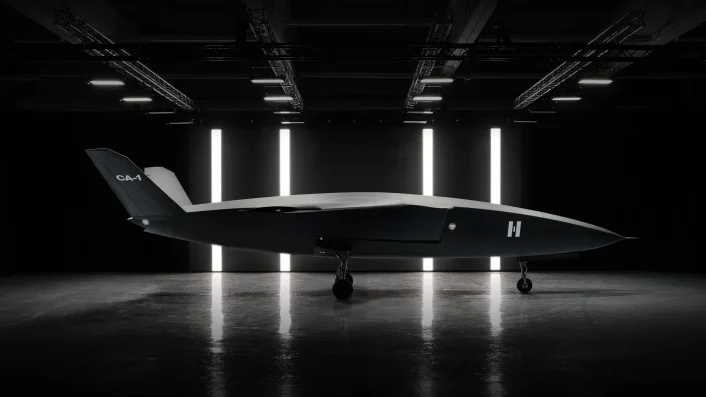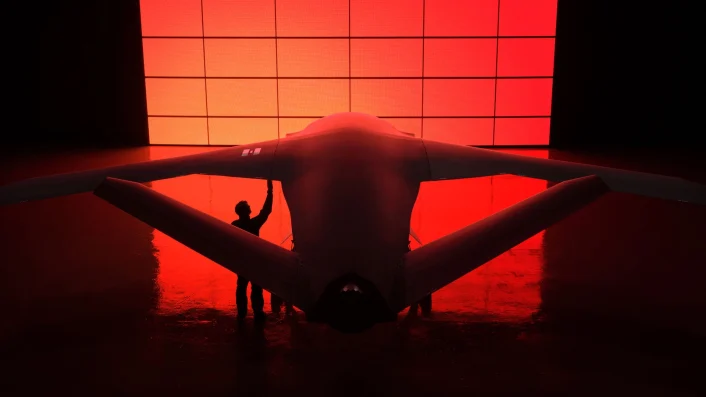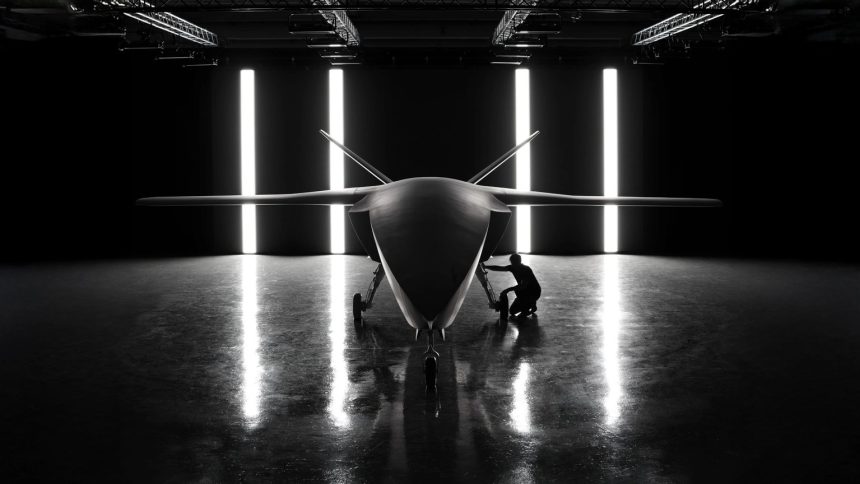The CA-1 Europa aims to deliver affordable mass and strategic autonomy through AI-powered air combat and multi-role mission flexibility.
German defense technology company Helsing has unveiled the CA-1 Europa, a new autonomous Uncrewed Combat Aerial Vehicle (UCAV) designed to serve as a mass-produceable, AI-driven combat jet for European air forces. Revealed at Helsing’s subsidiary Grob Aircraft in Tussenhausen, Germany, the CA-1 Europa represents what the company describes as a clean-sheet approach to uncrewed combat aviation.
The company says the first flight is scheduled for 2027 and operational readiness projected within the following four years. The unveiling highlights Europe’s growing efforts to develop sovereign solutions in the field of advanced autonomous air combat systems, where global competition is accelerating.
A Mass-Produceable European UCAV
According to Helsing’s press release, the CA-1 Europa is a three-to-five-ton-class autonomous jet tailored for what the company calls “intelligent mass” – the ability to deploy large numbers of affordable, flexible platforms in high-intensity operations.
The aircraft features cranked kite wings and canted vertical tails, with side air inlets and a single engine. The product’s page lists a length of 11 meters, wingspan of 10 meters, and high-subsonic speed, with an internal weapons bay and modular design allowing integration of sensors, electronic warfare (EW) systems, effectors, and self-protection equipment.

The company further mentions the airframe is optimized for dispersed operations, including deployment from improvised locations with minimal infrastructure. This is an aspect which is becoming increasingly relevant in Europe, with multiple air forces recently increasing the frequency with which they practice this type of operation.
Helsing states that the aircraft will be capable of single-asset missions or swarm operations, offering deep strike, electronic warfare, and reconnaissance roles. A native command and control system will allow operators to plan and supervise missions, with the aircraft primarily controlled by the company proprietary’s Centaur AI pilot.
Torsten Reil, Helsing’s Co-Founder and Co-CEO, emphasized the strategic importance of autonomous combat aircraft: “Uncrewed fighter jets will become a key capability for establishing air dominance and keeping us safe. Europe cannot afford to fall behind in this category or become dependent on third parties.”
AI at the Core: Centaur, Cirra, and Symphony
The CA-1 Europa builds upon Helsing’s growing portfolio of artificial intelligence technologies. The company has already demonstrated Centaur, an autonomous air combat agent, during test flights with Saab’s Gripen E fighter earlier this year.
As mentioned by Helsing and Saab in their press releases, Centaur took full control of the Gripen in Beyond Visual Range (BVR) scenarios, executing complex maneuvers and cueing fire solutions against a manned opponent aircraft over the Baltic Sea. Saab highlighted the significance of the achievement, noting the Gripen E’s open software architecture allowed integration of Helsing’s reinforcement-learning algorithms in just six months.
Antoine Bordes, Vice President of AI at Helsing, described the technology as “a new era of human-machine collaboration,” with Centaur trained in Helsing’s large-scale reinforcement learning facility to achieve human-level performance in air combat within 24 hours of training cycles.
Alongside Centaur, Helsing’s CA-1 will integrate Cirra, an AI-driven electronic warfare system designed to counter adaptive, software-defined integrated air defense systems (IADS), and Symphony, an AI mission coordination platform orchestrating distributed autonomous operations.
Competition in the UCAV Landscape
The CA-1 Europa arrives amid increasing international investment in autonomous collaborative platforms. In the United States, the Air Force’s Collaborative Combat Aircraft (CCA) program recently awarded contracts to Anduril and General Atomics to develop and build platforms intended to operate alongside crewed fighters.

In Europe, Airbus presented a lifesize model of its own UCAV concept, called Wingman, in June 2024, designed to accompany the Eurofighter Typhoon in manned-unmanned teaming missions. General Atomics, Anduril, Boeing and Lockheed Martin are in talks with European companies about potential cooperation in the CCA sector.
According to Reuters, Helsing is positioning CA-1 Europa as a cost-effective solution, estimating unit costs at a “fraction” of a modern fighter. The company confirmed “hundreds of millions of euros” in investment and partnerships across Europe but declined to specify weapon loadouts at this stage.
Strategic Autonomy and European Supply Chains
Helsing stresses that the CA-1 Europa is not only about performance but also about ensuring European strategic autonomy in the unmanned aircraft technologies. With its sovereign software stack and European manufacturing ecosystem, the aircraft is being developed to minimize dependence on non-European supply chains.
Stephanie Lingemann, Helsing’s Senior Director Air Domain, framed the development within the broader shift toward attritable systems: “The future of combat air is in attritable systems, with software and intelligence as a key enabling technology. As a consequence, the CA-1 Europa has autonomy at its core.”

This emphasis aligns with European concerns over reliance on external defense suppliers, following the uncertain relations with the U.S. It also aligns with rearming and modernization trend following the war in Ukraine, which has accelerated the demand for drones and autonomous strike capabilities.
Operational Concepts and Mission Flexibility
Helsing envisions CA-1 Europa as a multi-role combat jet supporting diverse mission profiles, including deep precision strike, Electronic Warfare and Suppression of Enemy Air Defenses (SEAD), Reconnaissance and intelligence-gathering, manned-unmanned teaming (MUM-T) and swarming operations.
Ned Baker, Helsing’s UK Managing Director, highlighted the relevance such system would have if procured by the Royal Air Force: “CA-1 Europa will offer the RAF unprecedented combat air capability – an autonomous collaborative platform that can undertake a number of different missions to protect the UK without putting British pilots in harm’s way.”









